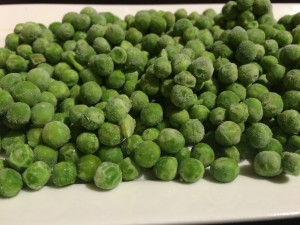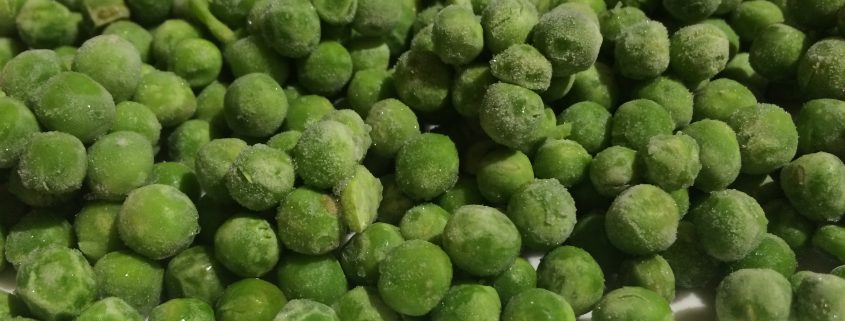June Monthly Morsels
 “Pass the Peas, Please!”
“Pass the Peas, Please!”
By Charna Sheinfeld, Nutrition Intern
When you think of green peas, what’s the first thing that comes to mind? Does it stir up those childhood memories of being “force fed” these small green spheres along with their little orange carrot counterparts?
When cooked well and paired with the right foods, peas can be an enjoyable and nutritious addition to any meal with their wonderful balance of sweet and starchy elements.
Frozen peas are unusual amongst other frozen produce in that they actually taste better and have better textures than that of fresh peas. This is because green peas are actually very delicate with little stamina. Within 24 hours of being picked, peas deteriorate, losing their delicate sugars and increasing in their starchiness. Therefore, fresh peas that are sold in stores, are usually blander, less sweet and overly starchy because they have usually been picked several days prior. Frozen peas, on the other hand are picked, cleaned, and frozen within several hours of harvest which helps to preserve their sugars, flavors, and textures, as well as their nutrient content.
Peas are wonderful little balls of nutrition with a high protein, high fiber and low fat content. They contain high levels of antioxidants including flavonoids, carotenoids, phenolic acid and polyphenols. In fact, the polyphenol coumestrol, found to be beneficial in preventing stomach cancer is found in high amounts in peas. The strong anti-inflammatory properties of peas support the prevention of heart disease, cancer, and general aging symptoms.
Peas also contain a very high vitamin K content which contributes to healthy bones by helping to secure calcium in the body. The niacin in peas helps to reduce the production of triglycerides and LDL. Finally, the high amounts of fiber in peas contribute to better blood sugar regulation, and the prevention of constipation.
When cooking peas, do not boil them as many people would do. Rather, sauté them in a pan with a drop of water. Sautéing peas brings out their sweetness and gives them a little crunch, as opposed to allowing them to boil up to that mushy texture that many people negatively associate with peas. Peas can be added to soups in the last five minutes of cooking, salads, curries, and casseroles for added nutrients, flavor, and color.
Here are 2 brand new original recipes using frozen peas. Enjoy, and don’t forget to let me know how you like them.
Warm Brown Rice Salad with Peas, Sundried Tomatoes, and Mint
Crust-less Quiche Muffins with Peas, Leeks, and Ricotta


Leave a Reply
Want to join the discussion?Feel free to contribute!